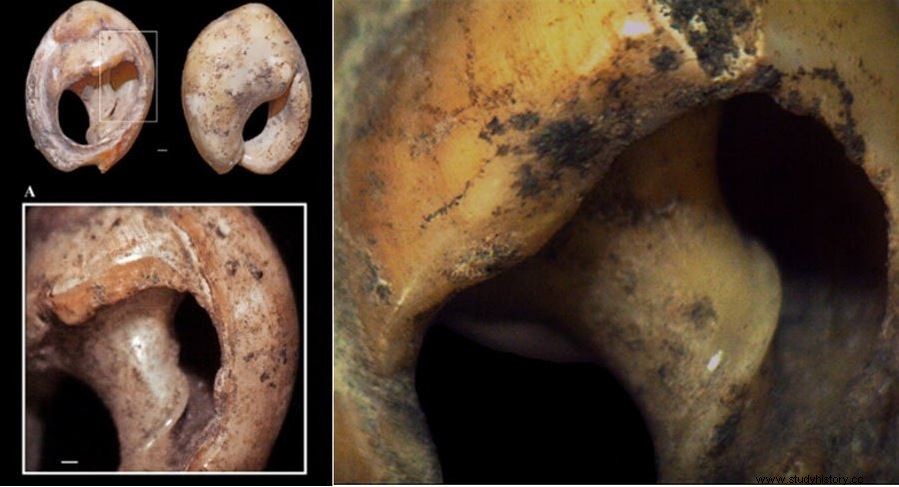Unearthed in Morocco, a prehistoric ornament composed of sea shells could be the oldest adornment encountered to date.

Series of shell beads discovered in the prehistoric cave of Bizmoune, Morocco.
Was it a necklace? Wristbands? Beads sewn onto a backing? From a belt? The oldest set of shells ever discovered has just been extracted from the cave of Bizmoune, an archaeological site located in Jebel Lahdid, about twenty kilometers from Essaouira, in the south-west of Morocco. "In 142,000-year-old sediments, dated using the Uranium-Thorium method [which measures the decay rate of uranium, Editor's note], we have indeed unearthed more than 32 shaped and pierced shells representing the elements of a prehistoric adornment" , explains Philippe Fernandez (CNRS, Aix-Marseille University). Researcher at the Mediterranean Laboratory of Prehistory Europe Africa (LAMPEA, UMR 7269), he co-signs in the journal Science Advances the details of this discovery and the work carried out in collaboration with an international team co-directed by Abdeljalil Bouzouggar from the National Institute of Archeology and Heritage Sciences (Insap) in Rabat (Morocco), and Steven L. Kuhn , from the University of Arizona (Tucson, USA).
Shells of marine gastropods

Entrance to the prehistoric cave of Bizmoune, Morocco. ©A.Bouzzugar, INSAP, Morocco.
"These are shells of a marine gastropod whose traces of perforations, wear by suspension as well as patina have been highlighted thanks to high-resolution microscopic observations , continues the paleontologist interviewed by Sciences et Avenir . We found the majority of these pearls between 2016 and 2019; since then, other shells have been added to this set of 32 elements." Some still bear red ocher residue. Made from the shells of Tritia gibbosula , a species of marine gastropod, these remains are the work of Homo sapiens populations. No doubt the ancestors of Aterian groups, named after a culture present in this region of North Africa from 130,000 years ago.
 Perforated, shaped, still bearing traces of ochre, the worked shells of Bizmoune cave dated to 142,000 years ago. © A.Bouzzugar, INSAP, Morocco.
Perforated, shaped, still bearing traces of ochre, the worked shells of Bizmoune cave dated to 142,000 years ago. © A.Bouzzugar, INSAP, Morocco.
Long walks were necessary to collect these shells
Above all, they postpone the existence of the oldest body ornaments known to date by nearly 20,000 years. These include the marine shells of Tritia gibbosula excavated at the Moroccan coastal site of El Mnasra, near Rabat (110,000 years); those of Glycymeris insubrica dated to 120,000 years old found in Skhul Cave, and the most recent levels at the Qafzeh site, Israel; those of Nassarius kraussianus unearthed in South Africa, at the Blombos (75,000 years old) and Sibudu (77,000 years old) sites; or this specimen of the genus Conus ochre-coloured, found near a child's burial in Border Cave, still in South Africa (74,000 years old).
Were the people carrying these objects only looking to adorn their bodies? Mark their belonging to a community or social status? Still, they did not hesitate to take long walks to collect these precious shells. These groups of hunter-gatherers who evolved in the middle of an abundant fauna (oryx, horses, rhinoceros, warthogs, gazelles, antelopes or other antelopes) for example traveled about fifty kilometers from Bizmoune to reach the Atlantic coast, then further away than the current coast.
